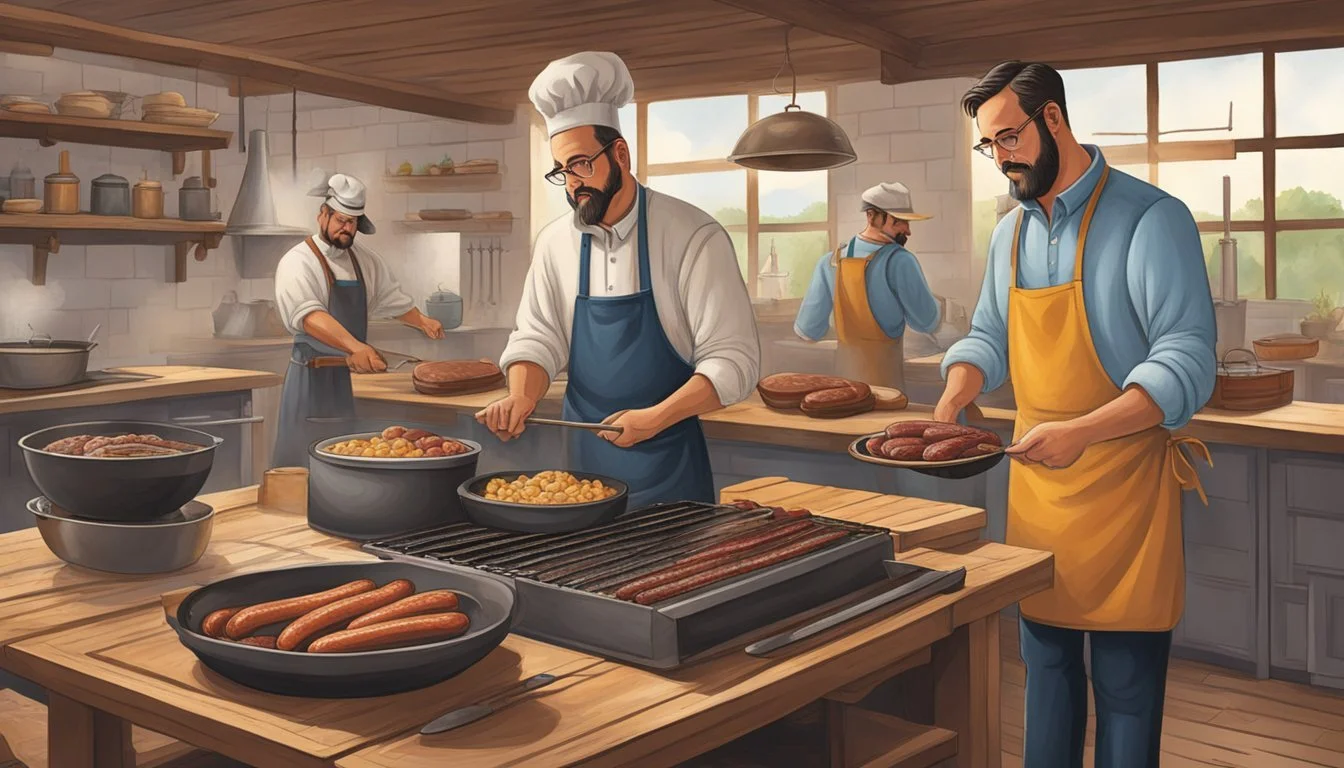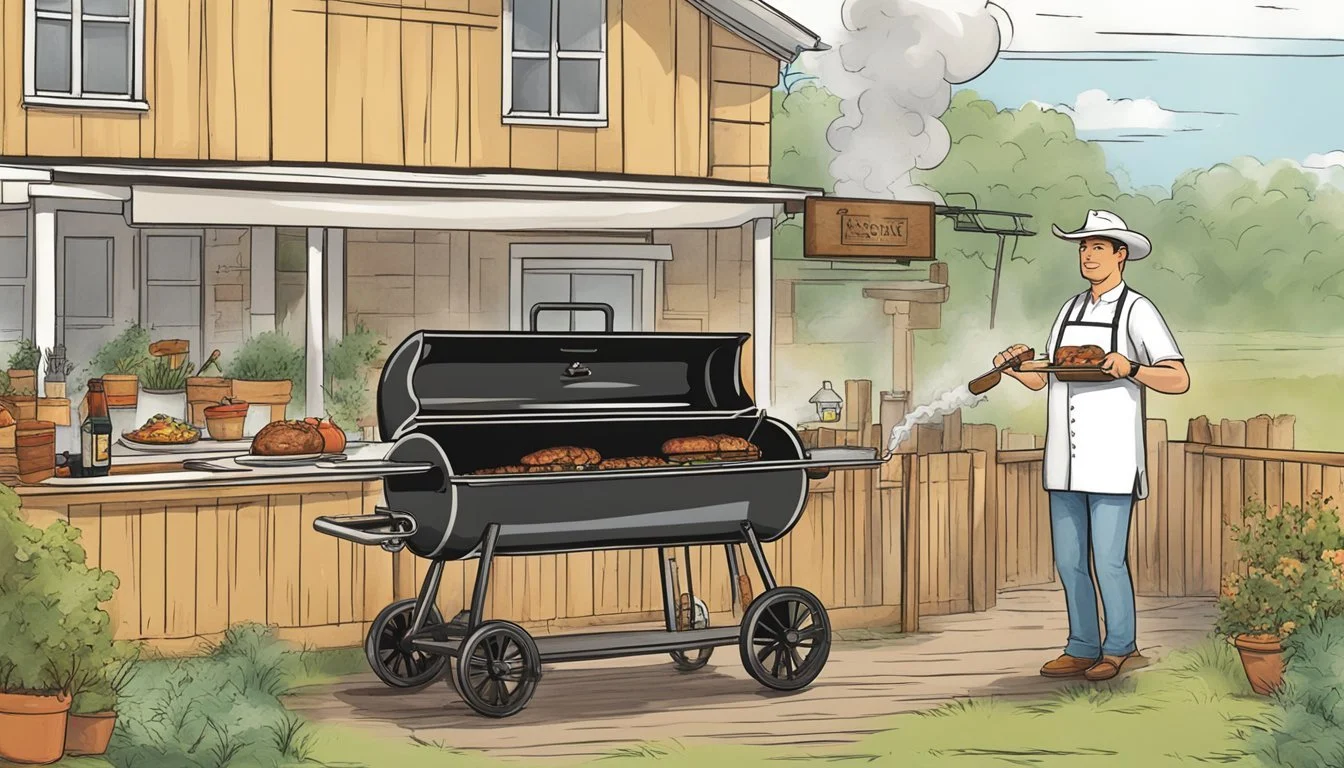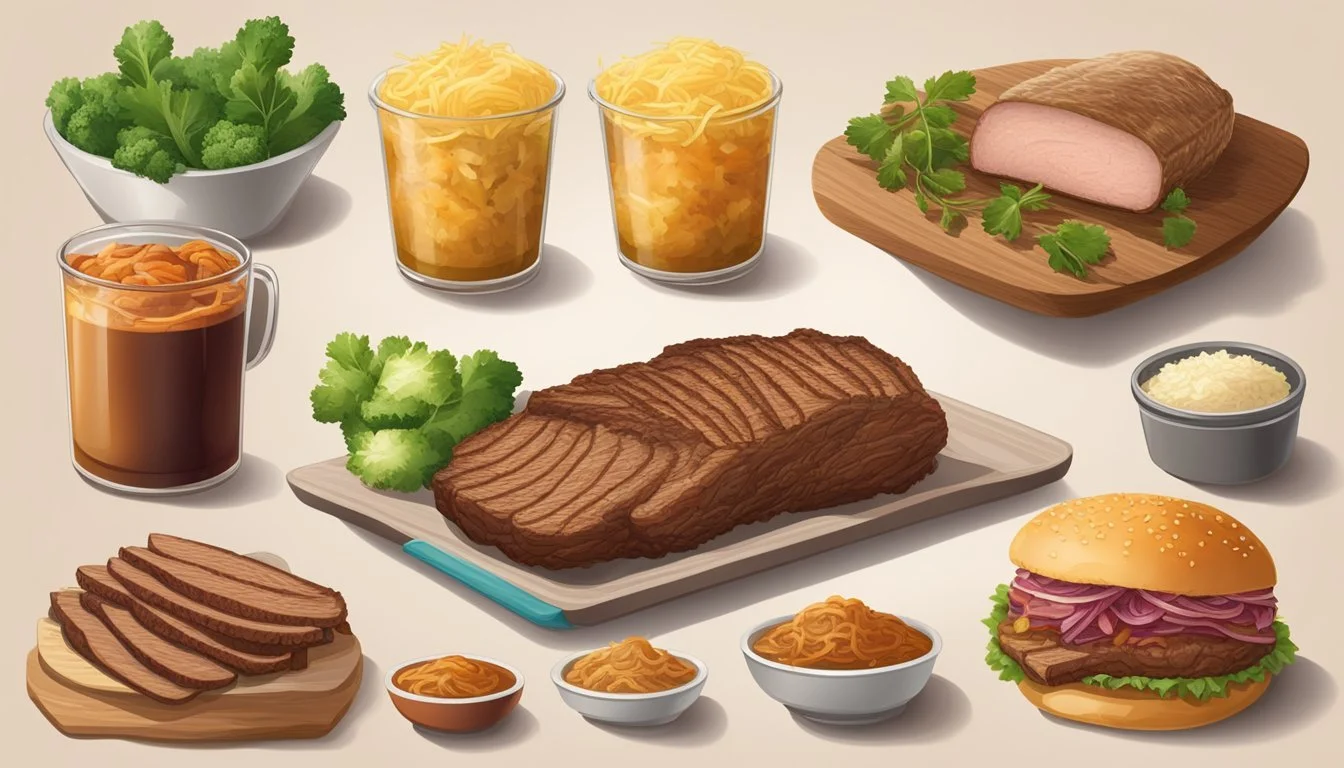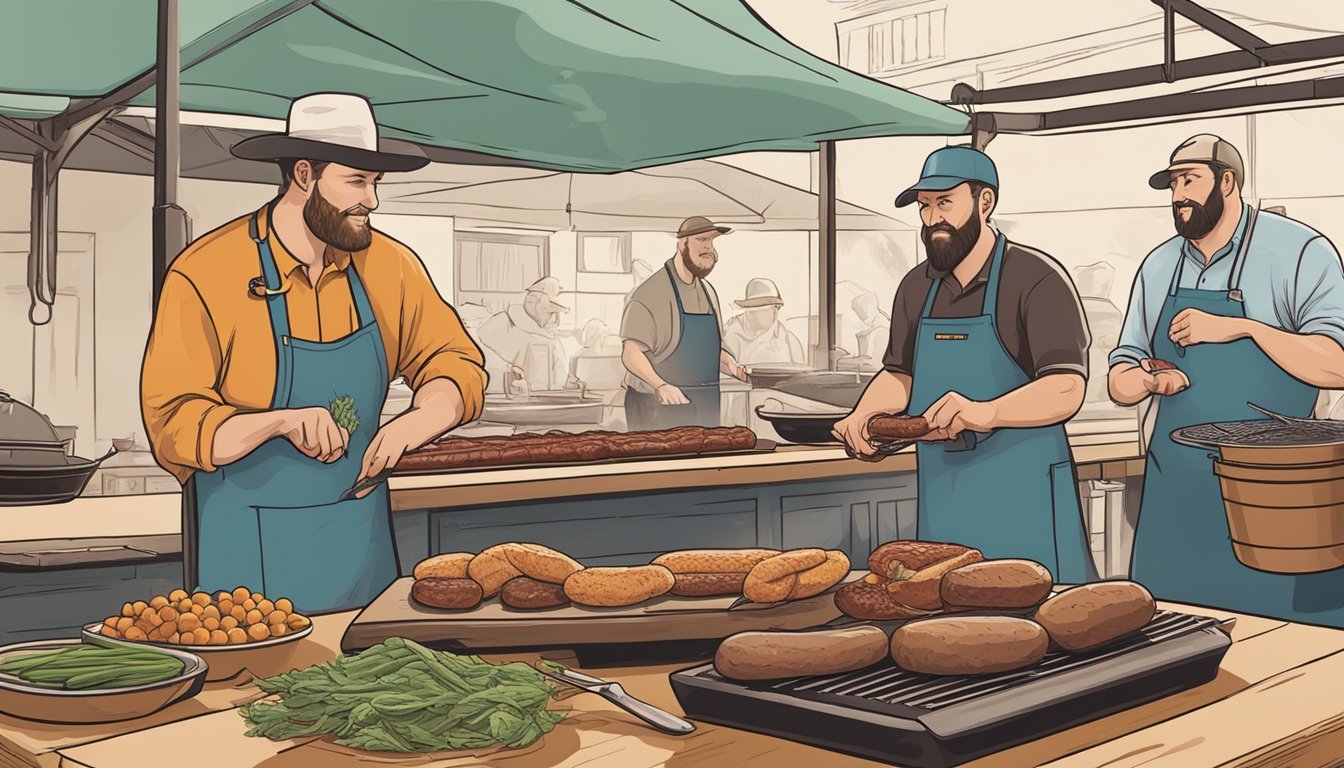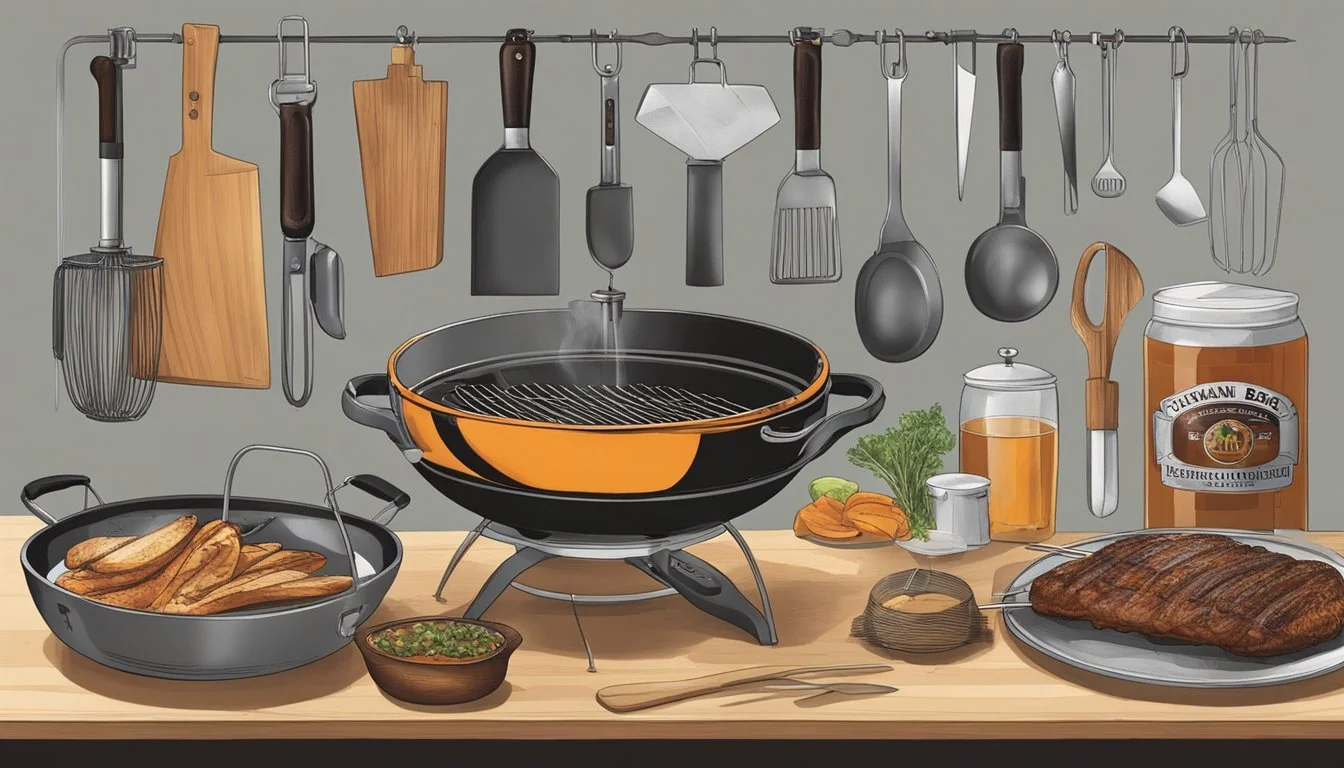The Influence of German Cuisine on Texas Barbecue Techniques
A Culinary Fusion
The culinary landscape of Texas is renowned for its rich and diverse barbecue (What wine goes well with barbecue?) tradition, which owes a significant part of its development to the influences of German immigrants. Throughout the 19th century, German settlers migrated to Central Texas, bringing with them a deep-rooted expertise in meat smoking and curing techniques from their homeland. This knowledge was seamlessly integrated into the local food culture, leaving a lasting impact that can still be tasted in Texas barbecue today.
Central to the fusion of German cuisine (What Wine Pairs Perfectly With German Cuisine) with Texas smoking methods is the concept of cooking meat 'low and slow', a technique adopted and refined by the German Texan communities. The practice of smoking meats over indirect heat for extended periods became a hallmark of Texas barbecue, contributing to the tender, flavorful, and distinctive style that differentiates it from other barbecue traditions. German culinary traditions also introduced a variety of sausages to the Texas smoking scene, enriching the state's barbeque menus with combinations of spices and smoking methods that continue to gather acclaim.
Texas barbecue has evolved into a point of state pride, a symbol of cultural convergence where German and Texan flavors continue to intermingle. The historical fusion of techniques has given rise to an iconic food heritage, where the slow-cooked briskets and sausages now stand as emblems of a shared culinary narrative between the German immigrants and the local Texan population. This blending of traditions has not only shaped the distinct palate of Texas barbecue but has also fostered a sense of community and identity among those who partake in and cherish this celebrated fare.
Historical Development
The transformation of Texas barbecue owes much to the German and Czech settlers of the 19th century. Their old-world techniques and customs laid the foundation for what is now a quintessential part of Texas cuisine. This section examines how these European influences helped shape the barbecue traditions in the Lone Star State.
German and Czech Immigrants' Influence
German and Czech immigrants arrived through ports like Galveston and Indianola, bringing with them a rich history of meat-smoking techniques. Central Texas became the heartland for these settling groups, who, as butchers and meat market owners, applied smoking as a method to preserve meat. With the progression of time, these varied methods became the bedrock for a distinctive culinary tradition within the region.
The Advent of Texas Barbecue
Following the Civil War, the melding of this culinary know-how with the ample availability of beef in Texas gave birth to the distinct style known as Texas barbecue. The pioneers in this industry began offering smoked meats (What wine goes well with smoked meats?)to customers, a venture that burgeoned into barbecue joints that are now iconic.
Culinary Traditions and Cultural Fusion
The Texas Hill Country saw a union of German and Czech traditions with local tastes, typifying cultural fusion. Central Texas barbecue, with its focus on smoked beef brisket, (What wine goes well with beef brisket?) is a direct descendant of this blend. It's a culinary evolution that saw native ingredients and European expertise combine under the Texan sun.
Key Historical Locations
Key historical locations like Fredericksburg, Elgin, and Lockhart play host to some of the oldest barbecue institutions. Kreuz Market in Lockhart stands testament to the enduring legacy of German settlers' inculcation into Texas culture. Elgin became renowned for its sausage, another German contribution. These towns remain culinary landmarks where the taste of history is evident in every bite.
Culinary Techniques and Styles
The infusion of German culinary techniques into Texas barbecue centers on the utilization of specific heat manipulations, smoking woods, and meat processing practices. Each element contributes to the distinct flavor and texture profiles recognized in Texas barbecue today.
Direct vs. Indirect Heat
In Texas barbecue, direct heat—the method of grilling meats right over the flames—is less common than indirect heat. The German influence emphasizes the latter for most barbecue methods, consisting of positioning meat away from the direct flame to allow for a more uniform cooking process. This technique, commonly referred to as low and slow, allows for beef, such as brisket, and pork ribs (What wine goes well with pork ribs?) to tenderize over several hours.
Smoking Methods and Wood Choices
Smoking methods vary by region, with each having a preference in wood type that enhances the flavor of smoked meats. Oak wood is predominantly used in Central Texas, while hickory and mesquite find favor in other regions. German settlers incorporated their smoking traditions using these woods to infuse a rich, smoky flavor that is now synonymous with various styles of Texas barbecue.
Sausage-Making and German Butchery
German immigrants brought with them the art of butchery, which played a significant role in the sausage-making process. Texas barbecue joints often feature smoked sausages made from a blend of spices, beef, and pork. The combination of German sausage recipes with Texan flavors has contributed to a selection of uniquely seasoned, smoked sausages.
Diverse Cooking Practices of Texas Regions
The cooking practices among barbecue regions in Texas vary. San Antonio and South Texas tend to feature cooking that reflects a Mexican influence with prevalent use of mesquite wood. West Texas barbecue often utilizes an open fire technique. The German influence can be observed in the emphasis on smoking over an oven or indirect heat, which is key to the tenderness and savory taste of the meats, often finished with a dry rub or served alongside sauerkraut.
Signature Dishes and Ingredients
The German influence on Texan barbecue is evident in the specific meats and dishes that have become staples in the region. Traditions carried over from Europe have blended with local tastes to create an unmistakable barbecue profile.
Meat Selection and Preparation
Brisket and sausage take center stage when it comes to Texas barbecue, a clear reflection of German culinary heritage. Brisket, a cut of beef that requires slow cooking at low temperatures, is a Texan BBQ cornerstone, often seasoned with a simple yet robust spice rub. Sausage-making, an art traced back to German and Czech settlers, contributes heavily to regional variations, with Central Texas known for its sausages made from both beef and pork, seasoned and smoked to perfection.
Complementary Sides and Accompaniments
Sides play an important role in rounding out a Texas barbecue meal. Traditional sides include:
Beans: A hearty component often cooked with a hint of sweetness.
Potato Salad: Creamy and tangy, adhering to German styles of preparation.
Coleslaw: Typically vinegary, lending a crisp contrast to rich meats.
Cornbread: A Southern touch that complements the smoky flavors (What wine goes well with smoky flavors?) of the barbecue.
Distinctive sides such as tacos and barbacoa exhibit the interplay between Tex-Mex cuisine and Texan barbecue, while places like Austin highlight a fusion of flavors with innovative barbecue tacos.
Barbecue Sauces and Condiments
Texas barbecue sauces and condiments have been influenced by a variety of cultural influences, including German. Central to Texan sauces are flavors that are:
Sweet: Often with a base of tomatoes and a hint of molasses.
Spicy: A nod to the Tex-Mex integration into the culinary scene.
Unlike in some other barbecue regions, Texans may opt for a less saucy approach, letting the meat's natural flavors and the smoke shine. When sauces are used, they enhance rather than overpower the inherent flavors of the barbecued meats, (What wine goes well with barbecued meats?) especially the sausages and spare ribs.
Influence on Modern Barbecue Culture
German culinary heritage has profoundly shaped the techniques and features found in today’s Texas barbecue culture. This blend of traditions has fostered a unique dining experience that places Texas on the map as a critical hub for American barbecue styles.
Popularity and Evolution of the Barbecue Joint
Barbecue joints in Texas have become emblematic institutions of dining, embodying a rich synergy of German and Texan culinary traditions. In Central Texas towns like Lockhart and Austin, the art of smoking meats, especially beef brisket, finds its technical roots in the German practice of slow-cooking tough cuts of meat. Originally brought into the limelight by German immigrants, this cooking method has evolved where barbecue joints now routinely serve tender, smoked brisket that's become a staple of Texas cuisine.
With an unyielding popularity, contemporary barbecue joints have preserved these techniques while also incorporating local flavors such as Tex-Mex influences. Ingredients like pickles, white bread, and side dishes like collard greens and banana pudding offer a taste that is distinctively Texan. Restaurants across the state, from Houston to Fort Worth, are known not just for their smoked meats, but for a full culinary experience that celebrates the union of traditions.
Texas's Role in National Barbecue Styles
As a result of this culinary evolution, Texas has carved out a significant role in defining American barbecue as a whole. While different regions like Carolina and Kansas City have their own acclaimed styles, the influence of German-inspired techniques brought by immigrants to Texas has contributed to a distinct barbecue character recognized nationally. The state’s focus on smoking meats, particularly chicken and beef brisket, has rippled across the United States, leading to a diverse barbecue culture that respects its Central European origins.
Texas's barbecue joints serve as a testament to this influence, and have established the state's reputation as an essential thread in the fabric of American barbecue styles. Whether in bustling city centers or small rural towns, the legacy of German cuisine lingers in the air, quite literally, as the aromatic smoke from the pits of Texas's barbecue restaurants continues to tell a story of culinary merger and innovation.
Preservation and Transformation
Texas barbecue represents a culinary tradition that has evolved over time, with German immigrants playing a crucial role in the development of the state's iconic smoking and curing techniques. The transformation of Texas barbecue is marked by the introduction of German culinary methods and the fusion of diverse flavors, underpinning the state's reputation for hearty, flavor-packed dishes.
Safeguarding Culinary Traditions
German immigrants to Central Texas brought with them a rich heritage of smoking meats to preserve them. This practice was essential before the advent of refrigeration. The immigrants' methods were adapted and integrated with local culinary traditions, ensuring the preservation of these techniques. Central to Texas barbecue are selections like smoked brisket, which demonstrate the lasting impact of these tried-and-true preservation methods.
Notable Traditional Components:
Meats: Beef brisket, pork ribs, sausage
Holy Trinity: Brisket, ribs, sausage
Wood: Post oak for smoking
Sides: Pickles, white bread, casserole, banana pudding
Contemporary Fusion and Tex-Mex Flavors
As Texas became more diverse, the culinary landscape transformed, incorporating Spanish and Tex-Mex influences. Sides and flavors in Texas barbecue restaurants began to display this diversity through offerings like spicy sauces and jalapeño-studded sausage. These contemporary fusions retain the core of German and Czech barbecue traditions while embracing the bold flavors characteristic of Tex-Mex cuisines.
Fusion Components:
Sauces: Incorporation of chili peppers and spices
Sides: Introduction of Tex-Mex elements like jalapeños
Innovative Barbecue Recipes and Trends
Innovation in Texas barbecue does not stop at Tex-Mex. Pitmasters continuously experiment with new recipes and trends, all while holding true to the core smoking techniques brought by German immigrants. Cooking meats ‘low and slow’ over woods like post oak remains the gold standard, ensuring that the essence of traditional Texas barbecue is preserved even in innovative dishes.
Trends in Texas BBQ:
Cuts of Meat: Experimentation beyond traditional cuts
Techniques: Modern twists on smoking and preparation methods
Unique Combinations: Integrating global flavors into classic dishes


